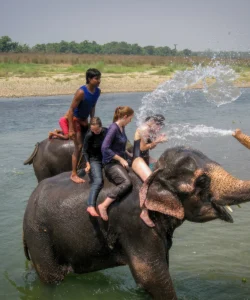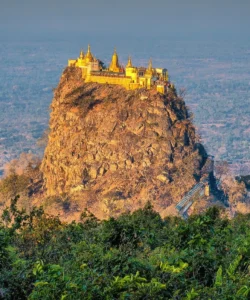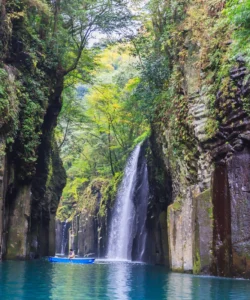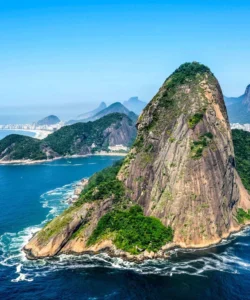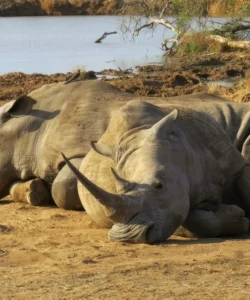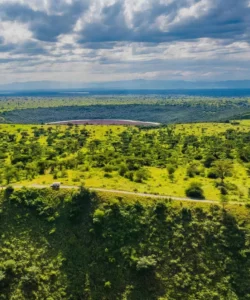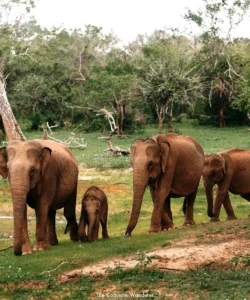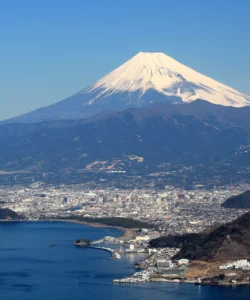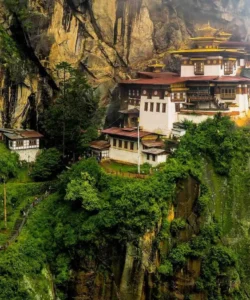Ratargul Swamp Forest is a truly unique natural wonder located in the Sylhet region of Bangladesh. It’s often dubbed the “Amazon of Bangladesh” due to its dense, evergreen freshwater swamp forest, where trees remain submerged for a significant portion of the year, creating a mesmerizing and otherworldly experience.
Name: Ratargul Swamp Forest (Bengali: রাতারগুল জলাবন)
Address: Gowain River, Fatehpur Union, Gowainghat Upazila, Sylhet, Bangladesh. It is located approximately 26 kilometers (16 miles) from Sylhet city.
How to Get There:
Accessing Ratargul Swamp Forest primarily involves reaching Sylhet city and then taking local transport and a boat ride.
- By Air: The most convenient way is to fly into Osmani International Airport (ZYL) in Sylhet. It has domestic flights from Dhaka and Chittagong. From the airport, you can hire a taxi or local transport to Gowainghat (approx. 1.5 hours drive), which is the gateway to Ratargul.
- By Road: Buses (AC and non-AC) operate from Dhaka’s major bus terminals (e.g., Sayedabad, Mohakhali, Arambagh) to Sylhet city. The journey takes approximately 7-10 hours. From Sylhet, you’ll need local transport to Gowainghat.
- By Train: Trains (e.g., Upaban Express) from Dhaka’s Kamalapur Railway Station to Sylhet Railway Station take about 8 hours. From Sylhet, local transport to Gowainghat.
- From Gowainghat to Ratargul:
- Upon reaching Gowainghat (often at the boat stand), you will hire a local engine boat called a “traller” to take you to the main forest area. This boat ride offers scenic views of local life along the waterways. The boat will take you to the Ratargul Bit office (approx. 1.5 hours), where you need to obtain permission to enter the forest.
- From the Bit office, you will typically transfer to a smaller, traditional dinghy boat to navigate through the narrower channels and deeper parts of the submerged forest. This is the truly immersive part of the experience.
- Best Time to Visit: The ideal time to explore Ratargul Swamp Forest is during and immediately after the monsoon season, from June to October. During this period, the forest is at its most beautiful, fully submerged under 10-20 feet (and sometimes up to 30 feet) of water, with trees standing tall in the water. The weather is hot and humid, but the water levels are at their peak, allowing boats to glide beneath the canopy.
- In the dry season (November to May), the water level drops significantly, and the forest floor can become dry, with some canals becoming walkable paths. This offers a different perspective.
- Permit/Fees: There’s a nominal fee for the forest entry permit at the Ratargul Bit office. Boat rental fees are separate and should be negotiated before starting your trip. Local guides are advisable for navigation and insights into the ecosystem.
Landscape and Architecture:
Ratargul Swamp Forest’s “architecture” is a captivating natural creation, entirely shaped by its unique freshwater ecosystem and the trees that thrive within it. Human intervention is minimal and functional, designed for observation and access.
- Freshwater Swamp Forest: Ratargul is a dense, evergreen freshwater swamp forest, the only one of its kind in Bangladesh and one of the few in the world. It thrives on the seasonal inundation of water from the Gowain River and the Chengir Khal channel.
- Submerged Trees: The most striking visual is the sight of towering trees standing directly in water, their lower trunks and roots submerged for months during the monsoon. The forest canopy creates a dense green umbrella over the waterways.
- Dominant Tree Species: The forest is primarily covered by the Koroch tree (Dalbergia reniformis or Millettia pinnata), which is well-adapted to the wet conditions. Other water-tolerant trees include Hijal (Barringtonia acutangula), Barun (Crateva adansonii), Kadam (Neolamarckia cadamba), and the ubiquitous Banyan Tree.
- Labyrinthine Waterways: During the flooded season, the forest transforms into a maze of narrow, winding waterways, navigable only by small boats. These channels allow visitors to glide silently through the submerged trees, offering an intimate perspective of the ecosystem.
- Biodiversity: The forest is a haven for diverse flora and fauna. It is home to various bird species (herons, egrets, kingfishers, parrots, eagles, migratory birds in winter), and animals like monkeys, water monitors, various types of snakes (which often seek refuge on the trees during high water), and mongooses (in dry season). It also supports a rich variety of fish.
- Watchtower: A single, elevated wooden watchtower is located within the forest. Visitors can climb to its top for a panoramic, 360-degree view of the entire swamp forest stretching out to the horizon, a crucial vantage point for appreciating the vastness of this unique ecosystem. This is one of the few man-made structures designed for visitors.
What Makes It Famous:
- “Amazon of Bangladesh”: Ratargul is widely known as the “Amazon of Bangladesh” due to its lush, dense, and seasonally submerged freshwater swamp forest, drawing a parallel to the world’s largest rainforest.
- Only Freshwater Swamp Forest in Bangladesh: It holds the distinction of being the only recognized freshwater swamp forest in Bangladesh, making it a unique ecological treasure within the country. While other smaller swamp forests have since been identified, Ratargul remains the most famous.
- Unique Seasonal Transformation: Its dramatic transformation from a (partially) dry forest in winter to a fully submerged “water forest” during the monsoon is a key defining feature, offering a profoundly different experience depending on the time of visit.
- Immersive Boating Experience: The primary fame comes from the enchanting experience of gliding through the water in small boats beneath the tree canopy, surrounded by submerged trunks and the sounds of nature. This immersive approach allows for close interaction with the unique environment.
- Rich Biodiversity: Despite being a specialized ecosystem, it boasts a surprising diversity of plant and animal life, making it a valuable site for eco-tourism and scientific study.
- Photogenic Beauty: The surreal landscape of trees growing out of water, especially with sunlight filtering through the canopy, creates exceptionally picturesque scenes, making it a favorite for photographers.
Differences from Some Other Wonders:
- Freshwater vs. Saltwater Swamp: While the Sundarbans (also in Bangladesh) is the world’s largest mangrove (saltwater) forest, Ratargul is distinct as a freshwater swamp forest. This difference in salinity dictates the types of trees, animals, and overall ecological characteristics.
- Seasonally Submerged Trees: Unlike traditional forests or rainforests (e.g., Taman Negara, Ulu Temburong National Park) where trees grow on solid ground, Ratargul’s trees are adapted to survive being partially or fully submerged in fresh water for several months a year, creating a unique visual landscape.
- Boat-Only Exploration During Peak Season: Similar to the Sundarbans, exploration during the monsoon is exclusively by boat, as the forest floor is entirely underwater. This differentiates it from forests with extensive trekking trails on land.
- Less Focus on Large Wildlife (compared to tigers): While it has diverse fauna, Ratargul is not known for “big game” like the Royal Bengal Tigers of the Sundarbans. Its wildlife viewing is primarily focused on birds, monkeys, snakes, and aquatic species.
- Smaller Scale (compared to Amazon/Sundarbans): While dubbed “Amazon of Bangladesh,” its overall scale is significantly smaller than the actual Amazon Rainforest or the vast Sundarbans. Its uniqueness lies in its specific ecological type within Bangladesh.
- No Monumental Architecture: The “architecture” is almost entirely natural, with the trees themselves forming the main visual structure. Any man-made structures (like the watchtower) are functional for visitor experience rather than being historical or monumental works in themselves.
- Localized Phenomenon: While a world-class example of a freshwater swamp forest, its fame is largely concentrated within the regional context of Bangladesh and Northeast India, compared to globally recognized natural wonders like the Himalaya or the Grand Canyon.
Ratargul Swamp Forest Photos:































